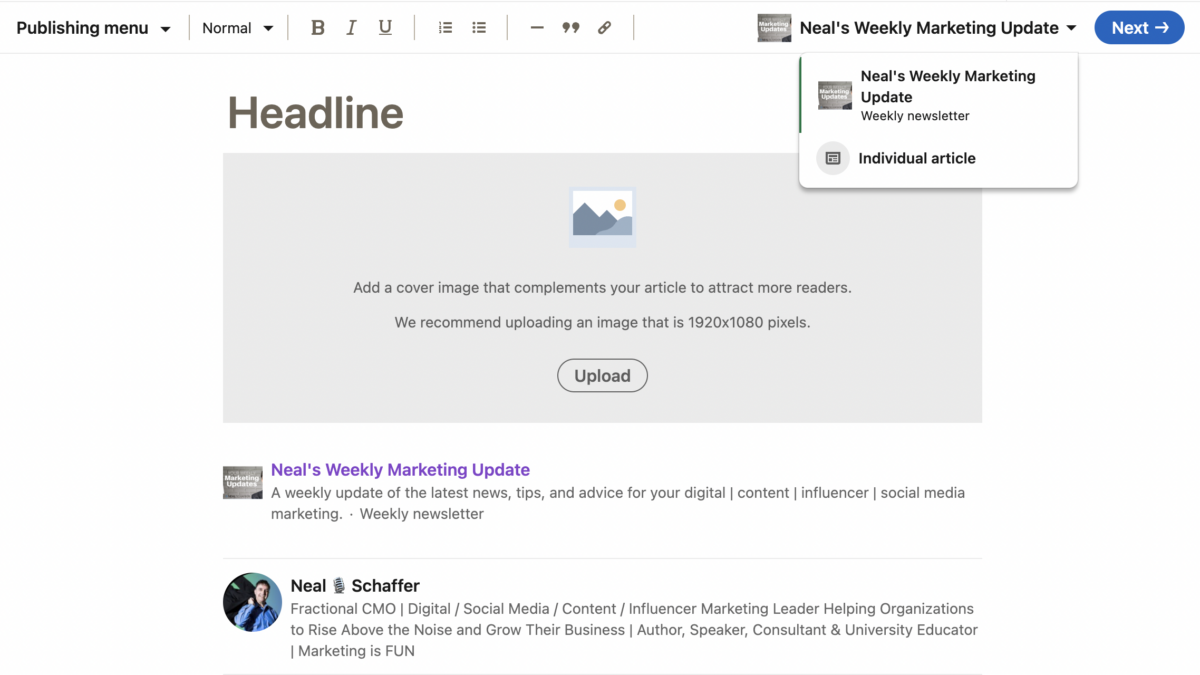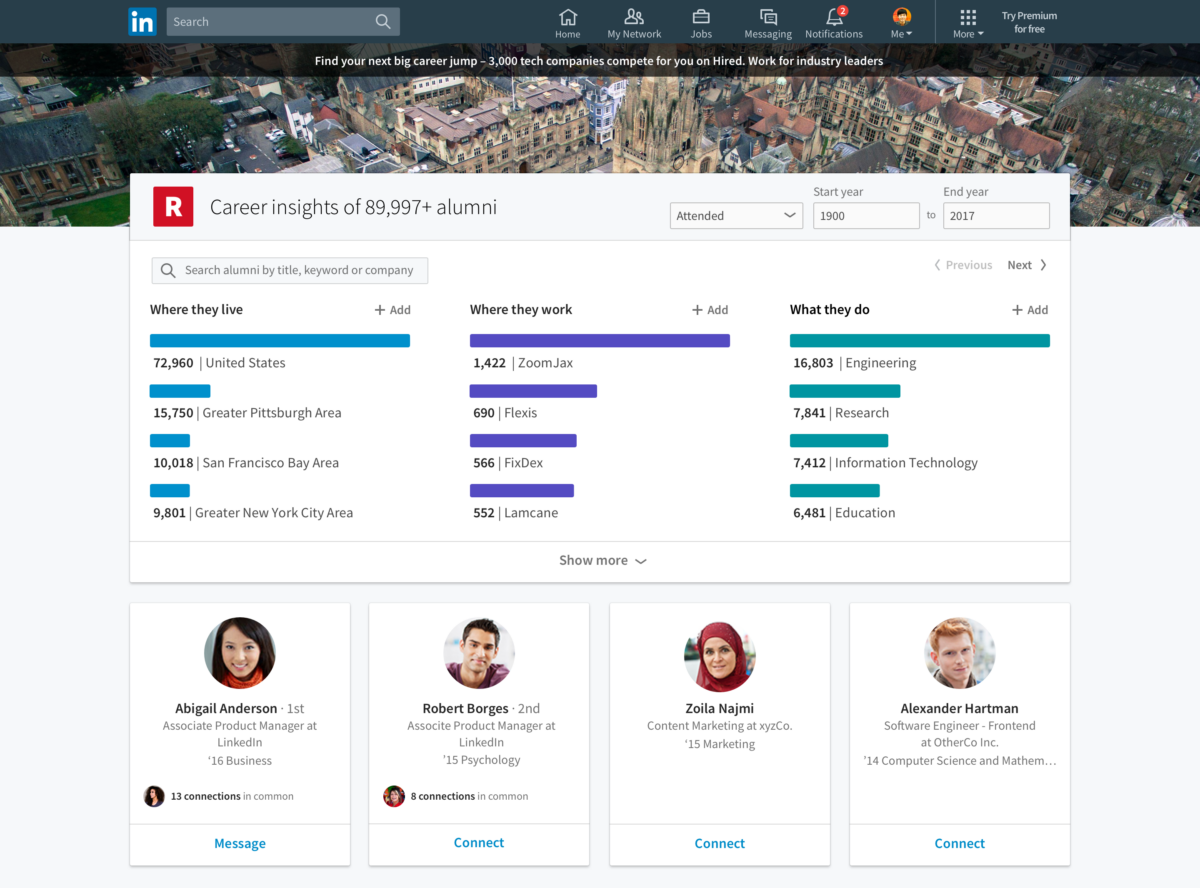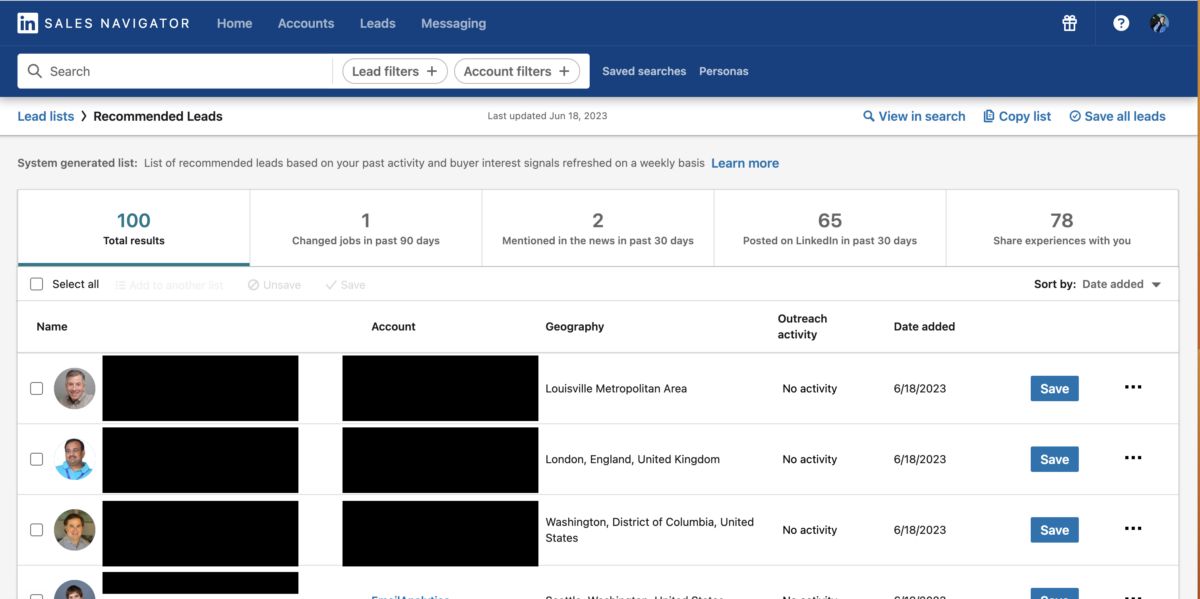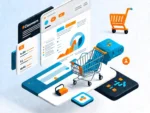
LinkedIn Lead Generation: 20 Strategies That Work in 2025
If you are in a B2B industry, then you know that LinkedIn is a critical source of leads. These LinkedIn statistics hint at the treasure trove that LinkedIn can be for those that work in a lead generation role:
- There are 90 million senior-level influencers on LinkedIn
- There are 65 million decision-makers on LinkedIn.
- At least 10 million corporate executives have accounts.
This blog post will equip you with all of the LinkedIn lead generation techniques and strategies that you will need to succeed. Some of these you undoubtedly are already doing, but please read to the end as you are bound to find a new strategy to add to your toolbox!
What is LinkedIn Lead Generation?
Simply put, LinkedIn lead generation is the process of using the platform to find people who might be interested in your products and services. These individuals can include buyers, decision makers, corporate executives, CEOs, business owners, and even thought leaders and influencers. Even though not everyone on this list will want to buy your product, they sometimes have an interest in learning about the latest developments in their industry. In turn, those people might spread the word about what your company has to offer.
It’s important to note that lead generation can include both outbound and inbound data collection.
Benefits of LinkedIn Lead Generation
By far, the biggest benefit of LinkedIn for lead generation is its professional emphasis. Specifically, while most social networks focus on members’ personal lives or ability to create content, LinkedIn showcases professional knowledge and experience. For this reason, this platform is uniquely situated to provide sales, marketing, and recruitment staff with unique opportunities to meet the right people at the right time.
Besides merely identifying interested parties, LinkedIn lets professionals of all types communicate with each other directly. It also fosters networking by requiring invitations from common connections in many situations. These privacy safeguards protect LinkedIn members from excessive spam.
Beyond simple networking, LinkedIn lets professionals exchange ideas. In fact, the bulk of LinkedIn users wants to catch up with industry trends and otherwise consume content related to their professions. Like other networks, authenticity is key to forming genuine relationships and providing trustworthy information that can convert customers down the line.
Ultimately, the three major benefits of LinkedIn lead generation are:
- Increased conversion rates by being able to find the right people and nurture those relationships
- Personalized messages are often more effective on LinkedIn because of the relative exclusivity.
- LinkedIn is one of the best sources for qualified leads because of its professional aspects and advanced search functions.
In the rest of this article, I will talk about various strategies that you can use to make the most of your LinkedIn lead generation.
Part 1: Profile Optimization Strategies
A first impression is vital in business. On LinkedIn, your profile is what attracts viewers and provides an overview of who you are. In other words, your LinkedIn profile is one of the most valuable LinkedIn lead generation tools on the entire platform.
Because your profile is critical to your overall success on LinkedIn, it’s important to optimize it for the results that you need. Here’s how.
1. Optimizing your LinkedIn headline
Your headline is what other people notice first about your profile. That’s because it’s displayed on a search results page, along with your profile Photo. Therefore, nailing that headline can easily be the difference between people reading your profile and passing it by.
There are a few ways in which you can make your headline stand out, depending on your LinkedIn lead generation goals. How does your company help other companies or professionals? What differentiates you as a salesperson? What types of people or companies are you trying to attract? Your answers to these types of questions will help you craft a headline that will stand out and encourage your leads to continue reading your profile and ultimately reaching out to you.
No matter how you optimize your headline, you’ll want to keep it short and sweet. There is limited space available, and if people don’t see your headline is compelling right away, they’ll probably just skip it.
2. Using a professional profile picture
Another key feature of profiles for LinkedIn lead generation is that they use a professional profile picture. On LinkedIn, it’s critical that you represent yourself as a serious professional rather than some goof off or somebody who doesn’t take life seriously. So, just as you would wear a suit to that old-important interview with management, you should have a professional profile picture.
Quality profile pictures help inspire confidence in other people. Even in an environment where we try not to judge people by their looks, people want to feel like they can trust you. Pictures are an important part of that.
Choosing the right picture can easily seem daunting. While I feel that having a professional take your picture is one of the best ways to ensure you make a good impression, that isn’t possible for everyone. To that end, choose a picture that’s reflective of how you might show up for an important client meeting.
3. Crafting a compelling summary
Your next step to LinkedIn lead generation greatness is having a summary that people will find compelling. Summaries briefly tell people who you are and what you’re about. In this case, you have more space than the headline. When they are written well, summaries help generate leads by demonstrating that what you offer is valuable to them.
By far, the best way to write an effective summary is by thinking about what makes you and the way in which your company helps others unique. This can be from a primarily professional perspective, or you can infuse some of your personality into your writing.
The bottom line is that your summary is an opportunity to truly connect with the people who read it. So, you want to make yourself likable and trustworthy. How you do this is ultimately up to you, though you must always ensure that your summary is appropriately professional.
Is Your LinkedIn Working?
Just released: my new book to help professionals, entrepreneurs, and business owners maximize LinkedIn for real growth.
With years of LinkedIn expertise, Maximizing LinkedIn for Business Growth offers actionable steps to build your brand, expand your network, and drive results.
Start leveraging LinkedIn like never before—grab your copy now! Click the cover or button below to buy on Amazon.
4. Showcasing your skills and endorsements
One of the main ways that people search for fellow professionals on LinkedIn is by using skills as keywords. Like any other search engine, the LinkedIn algorithm analyzes various profiles to determine which ones might be most relevant for a particular query. So, if somebody searches for carpenters, that is usually what they’ll get.
Similarly, endorsements are a helpful way to potentially rank higher on results pages. Not only do endorsements add keywords, but they add some social proof for your claims of being awesome in a particular area. Similarly, because your contacts can add endorsements for skills you haven’t listed already, you might find yourself endorsed for related skills, increasing the frequency with which you show up in results.
Managing endorsements is relatively easy. LinkedIn places these in a particular box, which you can choose to use or not. If you don’t want to use the box, you simply won’t have the section on your LinkedIn profile, but I don’t recommend that LinkedIn Lead Generation Purposes.
Skills are easy to manage by using categories. Specifically, there are knowledge, tools and techniques, or interpersonal skills. While for some skills, it’s obvious where they fall, others can benefit from categorization. However, doing this is always a good idea because it makes your profile easier to read.
5. Highlighting your achievements and experiences
Leveraging your past accomplishments for future leads is one of the most important things that you can do to boost LinkedIn lead generation. As the saying goes, past performance predicts future performance.
In business, people like to know what you’ve done, and LinkedIn lead generation is no exception. That’s because they want to know that they’re working with someone who knows their subject. This is especially true in more technical sales or anything else that’s heavily into analytics.
The best place to mention your achievements is throughout your LinkedIn profile, in your summary, professional experience, or even featured section if there is a link to an article or a photo or video of the achievement that you can share.
You should also make sure that you have listed the proper company that you worked at when highlighting your experiences in your professional experience section.. For instance, if you were the Director of Marketing at XYZ Company, then include their logo and a link to their page. This makes your experience look more genuine.
Part 2: Content Creation and Sharing Strategies
Once you have an optimized profile, it’s time to create and share content. This step is important because a large part of LinkedIn lead generation is making people more interested in what you have to say. Furthermore, content can help establish you as a thought leader in your industry or as an expert in a particular topic. No matter your industry, content also makes people more aware of you — just like they would be with a company blog or other traditional branded content.
However, simply writing content and posting it on LinkedIn is typically not enough to distribute your content or have it noticed by all the right people. Like almost everything else in marketing, you must be intentional about your content creation and distribution strategies.
6. Creating valuable content

By far, the most important thing that you can do is produce high-quality content that will increase demand for your products and services. The Internet is full of low-quality content, whether produced by hand or using AI tools. Frequently, this low-quality is about more than just for writing. In fact, a lot of people simply put words on a page and hope that it is sufficient to meet their goals. This strategy is less successful than ever because there’s a lot of competition across the web.
For people to notice and pay attention to your content, you want to make it worth their time. In other words, you want people to feel that the time they have spent reading your content brought them significant value and ultimately closer to doing business with you. Often, this is because you informed them about the latest industry trends or discussed how to solve a problem affecting many of your B2B customers.
Maximizing the value of your content takes research. For example, there are many analytics and other marketing tools such as Buzzsumo which can help identify the trending topics in your industry. You can also create content that addresses customer pain points or answers frequently asked questions about a product, service, or topic. Finally, ContentIn (pictured above) is a unique tool which uses AI to help guide you as to what LinkedIn content you should create.
7. Leveraging LinkedIn articles

While you can share what we call Posts, which are similar to status updates, LinkedIn also gives you the ability to share long-form content like a blog post, which they refer to as an Article.
You can certainly repurpose your company blog posts and create articles for them to give them wider distribution on LinkedIn, although you will first want to confirm that with your marketing department.
If you or your company send out regular newsletter, you can also do this from your personal profile in the form of an article by creating a newsletter. You can do this as part of LinkedIn Creator Mode – see my video below for further details as to how this works:
Further Reading: 11 Best Practices on How to Publish an Article on LinkedIn and Best Promote It
8. Engaging with industry influencers
Another great way to create content for LinkedIn lead generation is by engaging with industry influencers. Briefly, an influencer is somebody who has a significant following on social media or through conferences and other forums. People will want to hear what an influencer has to say and then make decisions based on that information.
There are several ways in which working with influencers can help generate leads. Besides letting influencers say great things about your products and waiting for the sales to come in, engaging with influencers helps your brand stand out above the rest.
Furthermore, engaging with influencers helps with leads by introducing your brand to the influencer’s followers. While there’s a good chance you’ll have many of these people in common, there will almost always be people who haven’t heard of you who have heard of the influencer. Ideally, you’ll pick an influencer with a broad audience that closely matches your buyer persona.
How do you find these people? On LinkedIn, one of the best methods is combing industry forums and groups. Users who talk a lot about the topic, and to demonstrate that they are knowledgeable, will turn out to be influencers. And, of course, you may already know some of them, either through your own work on the forums or from other industry contexts.
Further Reading: Who are LinkedIn Influencers – and How to Become One
9. Joining relevant LinkedIn groups
While LinkedIn Groups are not what they used to be in the heyday, depending on your industry, they are still a lead generation resource which you should utilize by specifically joining LinkedIn groups connected to your industry and its target market. When you can find the right group, this is one of the most efficient ways to meet people in your industry and to share ideas. That’s because these forums are excellent places to give and receive advice or to share knowledge.
With that said, simply jumping into a group and immediately sharing a bunch of information is not the best way to engage. Instead, start by engaging with existing discussions. Don’t to your horn or immediately talk about your company and its products. You can do that later.
Later on, you can use these groups to kickstart your LinkedIn lead generation by mentioning products. You can also begin by starting your own group discussions. These discussions can center around any relevant topic, but starting a conversation about problems that your products help to solve is a great way to present your brand.
10. Utilizing hashtags and keywords

Like other social media sites and the Web in general, LinkedIn has a built-in search algorithm. This algorithm not only helps people find content that they need immediately but also discovers material based on the user’s past behavior.
Both ordinary search functions and content recommendations require that content creators leverage hashtags and keywords. This is true whether you want to do LinkedIn lead generation or simply seek to inform. These hashtags and keywords help the algorithm categorize content and retrieve it in response to queries. Likewise, hashtags are useful in forum discussions and other applications to keep the conversation going.
Ultimately, the proper use of these text elements helps to ensure that your content is more visible and, therefore, more effective. That’s because your content will show up in more searches and discussions when properly categorized.
A good rule is, once you have Creator Mode turned on, to choose those 5 hashtags for which you want yourself and company to be found for. Now do searches for those hashtags and see what content comes up. That will give you some good ideas as to they type of content and hashtags you should be employing as well.
Part 3: Networking and Relationship-Building Strategies
Regardless of industry, one of the most critical aspects of LinkedIn lead generation is building relationships. This is unsurprising when you consider that sales, especially in the B2B sector, depend on a professional’s ability to make a connection with prospects.
However, networking and relationship building on LinkedIn are different from what you might to in-person or even on some other social networks. That’s because LinkedIn is like no other network due to its professional emphasis. Additionally, relationship-building on social media will always be different from more traditional methods.
Fortunately, there are some tried and true techniques that you can attempt.
Further Reading: Top 10 Ways How to Get More Connections on LinkedIn
11. Personalizing connection requests
People hate spam, both in their inboxes and on social media. For LinkedIn users, the problem extends to connection requests. One of the great things about LinkedIn is its improved level of privacy compared to other networks, and this is an advantage that must be respected. For that reason, you must avoid sending bulk or generic connection requests. Doing so not only reduces the percentage of acceptances but it runs the risk that people will issue a dreaded “do not know” response to your requests. If you get more than a handful of these on LinkedIn, the platform may place restrictions on your account.
On the other hand, if you personalize a message when connecting, then people will understand why you want to join their network. Furthermore, they can see the value of connecting with you much more easily. For instance, if you are an insurance agent, then when your potential connection understands you want to help them protect their business, you have a greater chance of making the connection. What people specifically do not want is to feel like somebody’s trying to sell them a bill of goods or promote spam.
To make your connection request more compelling, mention why you’re interested in that person. For instance, if you went to the same school, then you have a personal connection and shared experiences. You can also tell them what value you’re offering in exchange for the connection, such as a solution to their insurance problems or even that you want to benefit from their expertise.
Further Reading: LinkedIn Invitations: All of Your Questions Answered
12. Following up with new connections
After you have made a new connection, it’s important to follow up. After all, chances are that your prospect is getting a lot of new connections from other sales and marketing professionals, and it might be hard for them to keep track of everyone. Furthermore, LinkedIn lead generation is most effective when you can establish a relationship with each decision-maker.
To follow up, you don’t usually want to give a sales pitch right away. Instead, you might like or comment on a few of their posts, follow their company, and interact in forms that both of you frequent. Then, when you’ve built some rapport, you can mention how you might be able to help them in more detail.
13. Participating in LinkedIn events

While events were less common in the days that LinkedIn was mostly a job-hunting site, the platform has become a vibrant community. Increasingly, LinkedIn events are a great way to learn something new and make new connections. If you participate in an event, you may have the opportunity to share your knowledge and insights with other professionals in your industry. While this approach may not help you achieve eye-popping results right away, it will establish you as someone who’s knowledgeable in your industry.
Finding and promoting events is relatively easy. If you want to try and somebody else’s event, watch your industry groups and forums on LinkedIn. You can also monitor company pages as appropriate. Promoting an event on LinkedIn is relatively easy because there’s a lot less competition. If you want to try this, be sure to post your event on industry forums and on your company’s LinkedIn page. This way, everyone can see what sort of event you are holding and who is sponsoring it. That will go a long way toward building and maintaining the public trust.
Note that LinkedIn Events can be created for both external webinars and in-person events as well as LinkedIn Live and LinkedIn Audio events, both of which are available to you once you have Creator Mode turned on.
14. Offering recommendations and testimonials

Social proof is an important concept across platforms and industries. Specifically, this is a concept which states that your sales and marketing pitch is more credible when other people validate your claims on social media.
Naturally, the process of giving and receiving endorsements on LinkedIn requires a level of diplomacy and tact. After all, you are asking this person to lend their reputation credibility to a product or brand. For this reason, you should never ask people for an endorsement right away. Instead, Cultivate that relationship over time.
A relatively easy way to get testimonials for your LinkedIn profile is by monitoring product reviews and forum discussions. Even on LinkedIn, many industry discussion boards will talk about the latest products and services. If somebody talks about your products enthusiastically, then there’s a healthy chance that they’d be willing to provide an endorsement, testimonial, or review for your advertising purposes.
Done right, this user-generated content will become a valuable LinkedIn lead-generation strategy for your brand.
15. Leveraging alumni networks

One of the most tried and true networking methods generally is the use of alumni networks. After all, people have sought out fellow alumni for opportunities or helped someone based on their school affiliation for centuries.
In a more modern context, alumni will often give each other referrals. This is helpful both to the person that needs a referral and to the business or professional who receives the referral. Frequently, these referrals are given through professional conferences, by calling alumni Associations, or in any of several other contexts.
Nowadays, alumni networks have become useful sources of LinkedIn lead generation. LinkedIn groups run by alumni associations or similar organizations help to bring alumni together. You can also find fellow alumni through the search feature or by combing through mutual connections. That’s because most professionals will list their school affiliations on their profiles. Then, find a way to talk to them about your school rather than jumping in and asking for a referral immediately.
Further Reading: How to Network on LinkedIn from an Inbound and Outbound Perspective
Part 4: Utilizing LinkedIn Tools and Features
Because of its focus on business relationships, there are a lot of features you can use for LinkedIn lead generation. And at the same time, the platforms focus on privacy and their attempts to maximize revenue means that many of these tools are fee-based. Nonetheless, there are more than enough tools.
16. Leveraging LinkedIn’s search functionality

Especially if you have a limited budget, LinkedIn’s search functions are very useful for lead generation. While the platform places significant limits on how many results you can get as a free user, if you leverage search criteria properly, then you can get more relevant leads for your effort. As the saying goes, quality over quantity.
In other words, although you’ll need LinkedIn Premium to get the most out of search, many advanced search functions are still available to remember. To find the right people, make sure that you have will defined categories for research. For example, if you have a local or regional brand then you might only be interested in finding people who live within your service area. So, you would use a location filter along with the relevant keywords for your industry.
Once you’ve found the right people, you can proceed to nurture those leads according to your regular practice and LinkedIn rules. Best of all, you’ll easily stay in compliance with LinkedIn rules and common courtesy.
17. Taking advantage of LinkedIn Sales Navigator

Among the most powerful LinkedIn Lead Generation tools on the platform is Sales Navigator. This is a premium product which LinkedIn designed so that professionals could generate leads and nurture relationships which with become effective. At the same time, because sales navigator costs money, it serves a dual purpose of protecting members from spam and helping to pay LinkedIn’s bills.
With Sales Navigator, you get a suite of tools that help you find the right people. For instance, you get extra privileges on LinkedIn search, including the ability to get more results at the same time and to further refine your search for the most relevant leads.
Another valuable tool in sales navigator is your monthly allowance for InMail. These messages let you reach out to people who are not in your network, and for whom you can’t get invitation. At the same time, because an InMail costs money or credits, members are protected from spammers. It’s too expensive for people to send junk InMail, so you’d only send one when you believe somebody is an excellent prospect.
Once you have the right information, you can follow up with your leads in many different ways. For instance, besides InMail you may also be able to send a regular email or send them something at work. If you have a longer timeline, you might even engage with these leads on industry forums or discussion groups.
Further Reading: These are the Best 11 LinkedIn Premium Features You Should Check Out
18. Using LinkedIn InMail effectively

InMail does a lot more than allow you to reach out to people who aren’t in your network. Because these messages cost money to send, LinkedIn labels the messages as InMail specifically. Furthermore, recipients get a notification in their email saying that they’ve gotten one. Therefore, InMail is one of the most effective LinkedIn Lead Generation Methods if you can afford them.
However, just because you can afford to send a lot of InMail does not mean you should spray and pray. Instead, send your InMail to targeted prospects to you believe have a very high chance of turning into customers — or at least passing the word.
Similarly, when you do send an InMail message, you want to maximize its effectiveness. I have an extensive guide about how to use these tools most effectively. For instance, you should always personalize the message with somebody’s name. Mention something that you like about that individual or that led you to contact them on a personal level in the message. This demonstrates to recipients that your message is not spam.
Further Reading: What is a LinkedIn InMail and How to Leverage Them
19. Monitoring LinkedIn analytics

You don’t need to go overboard here, but here are a few things you should be monitoring regularly, such as:
- Your content performance to see how you can further optimize it
- Your traffic coming FROM LinkedIn to where ever you are leading prospects and associated conversion data
- While not an analytic per se, seeing who has viewed your profile will help you see some of the results of your efforts
Further Reading: 11 LinkedIn Analytics to Better Measure Your LinkedIn ROI
20. Exploring LinkedIn advertising options
While most of us don’t think about LinkedIn as a place to post advertising, B2B ads on LinkedIn are very effective. That’s because LinkedIn lets you target the ads based on your target audience and demonstrated interest in your products and services.
As with other platforms, you can choose from several different ad types. For instance, you can get a classic PPC text-only ad, which is great for recruiting and inexpensive campaigns. Sponsored messaging sends a message to users’ inboxes. Unlike InMail, they aren’t highly personalized. But they also let you reach people at scale. Dynamic ads automatically adjust to your audience. Finally, you can produce and post sponsored content that shows up in people’s feeds.
Design-wise, LinkedIn ads are very similar to other platforms. You’ll need an ad manager account, which you can get through the business services section on your homepage. Tell LinkedIn what your goal for a campaign is and follow the prompts. If you have good advertising software, buying ads for LinkedIn lead generation is no more difficult than purchasing them elsewhere.
Further Reading: LinkedIn Ads Manager: The Definitive Guide
Conclusion
There are a lot of ways to succeed at LinkedIn lead generation. Your journey should always start with a great profile and company page. Then, you can use LinkedIn’s premium and basic features to find the right people at the right time. That information will let you decide whom to build relationships with and how to be more effective when doing so.
The content game is long-term, but it can help to supplement your outbound lead generation with an increasing amount of passive inbound leads over time when done right.
Finally, it goes without saying that lead generation on LinkedIn is often easier if you leverage ads.
To make the best of your efforts, be sure to carefully strategize and target the right people. By following these tips, you should become highly effective at LinkedIn lead generation.
4 Comments
Comments are closed.















I was surprised to find an article so in depth about this topic. There were a multitude of resources to further learn about selected topics within the realm of LinkedIn, and I found that very beneficial. I recently discovered what LinkedIn was and how it can change your career- mastering it with help like yours I believe will set me up for success. Thank you again! Keep up the good work.
Thanks Ashlyn! I realize that I had never written a blog post on this basic topic so I am glad that I did and it could help others! Wishing you only the best of luck!
This article was really insightful and well detailed.
Thank you so much for sharing.
You are very welcome my friend!